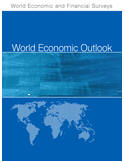Reports are among the most common UN documents. Not all reports are issued as documents with symbols. Some may be published only on the website of the body that issued or received the report. There are many types of reports on a wide variety of topics.
Most UN bodies, such as committees, commissions, boards, councils, and conferences, report on their work.
These reports include summaries of the work of the body for a given time period or session.
In general, UN bodies report to their parent organ on the work of a session or year and include:
Often the reports of subsidiary bodies are supplements to the Official Records of the parent organ.
Because most UN bodies are not entitled to meeting records or resolutions as individual documents, the annual or sessional report is the source for information about statements and adopted resolutions.
The principal organs report to the General Assembly every year on their work during the past year, as mandated by Article 15 of the UN Charter.
The annual reports of the Secretary-General, Security Council, Economic and Social Council and International Court of Justice offer excellent starting points for research.
These reports are supplements to the General Assembly Official Records (GAOR) for each session.
Prior to the 31st session, documents were sequentially numbered. The supplements to the Official Records were renumbered for each session.
In addition to the annual report of the Secretary-General on the work of the Organization, the Secretary-General reports to the principal organs and their subsidiaries on a broad range of topics.
In general, reports of the Secretary-General are issued in response to request from one of the principal organs or a subsidiary body. The report usually cites the resolution or decision that called for it.
The symbol assigned to a Secretary-General report usually indicates the body to which the report is submitted.
For example, the Secretary-General reports to the General Assembly, symbol A/-, on:
The Secretary-General reports to the Security Council, symbol S/-, on topics such as:
The Secretary-General reports to the Economic and Social Council, symbol E/-, on topics such as:
The Secretary-General reports to other organs and subsidiary bodies on topics on their agendas.
Some reports are transmitted by a letter, note, or note verbale.
This happens frequently with reports issued by:
UN bodies publish flagship reports to share information about the work of the organization with the public. These reports usually come out annually to report global or regional statistics on a certain topic. They often have a theme for the year. Many flagship reports were traditionally issued as books, but are becoming multimedia publications.
Flagships of UN and its Programmes and Funds and Specialized Agencies include:
 Global Environment Outlook / United Nations Environment Programme
Global Environment Outlook / United Nations Environment Programme Human Development Report / United Nations Development Programme
Human Development Report / United Nations Development Programme Industrial Development Report / United Nations Industrial Development Organization
Industrial Development Report / United Nations Industrial Development Organization State of the World's Children / United Nations Children's Fund
State of the World's Children / United Nations Children's Fund World Cities Report / UN-Habitat
World Cities Report / UN-Habitat State of World Population / United Nations Population Fund
State of World Population / United Nations Population Fund World Development Report / World Bank Group
World Development Report / World Bank Group World Drug Report / United Nations Office on Drugs and Crime
World Drug Report / United Nations Office on Drugs and Crime World Economic Outlook / International Monetary Fund
World Economic Outlook / International Monetary Fund World Economic Situation and Prospects / Department of Economic and Social Affairs
World Economic Situation and Prospects / Department of Economic and Social Affairs World Investment Report / United Nations Conference on Trade and Development (UNCTAD)
World Investment Report / United Nations Conference on Trade and Development (UNCTAD)169,000 pages digitized in 2023
Online: Mon-Fri: 9am–5pm ET
Reading rooms: Mon-Fri: 10am-4pm ET